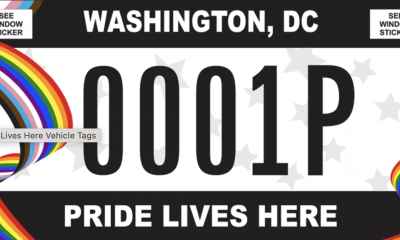Financial
RedRocks is H Street gem
Emerging corridor’s newest venue shines bottom to top

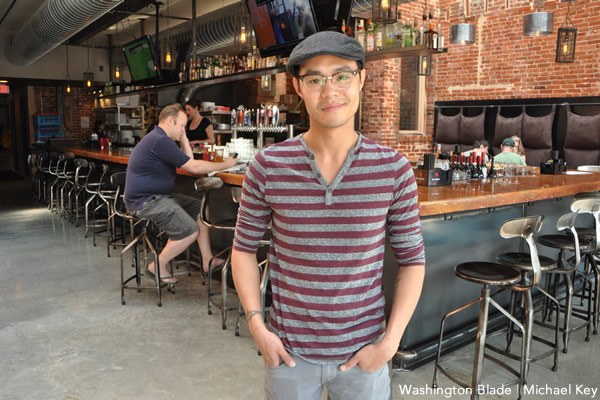
Ken Fulkroad is general manager of the newest of four area RedRocks locations. (Washington Blade photo by Michael Key)
When Kenneth Fulkroad moved to D.C. a little more than two years ago, he knew where he wanted to end up. Recently hired to open and manage a sparkling new multi-level restaurant and bar that has quickly become a prominent highlight there was a bonus.
Gravitating to the still rugged “edginess” of the re-developing H Street commercial corridor in Northeast Washington, Fulkroad eventually settled in the adjacent Trinidad neighborhood immediately to the north. A transplant most recently from New York, it was the section of town he found reminiscent of Brooklyn and the East Village.
The 29-year-old hospitality professional and now general manager of the newest of four area RedRocks locations feels most at home where the “hipsters” he unselfconsciously references have migrated in discernable numbers. A veteran of service, operation and management at diverse casual and fine-dining establishments in Boston, New York and D.C., Fulkroad learned the trade by hands-on experience.
A topsy-turvy hardscrabble childhood spent growing up gay near Boston instilled in a self-described “awkward nerd” an independent character and self-reliant work ethic. Beginning with his first eatery job at age 18, the whip-smart articulate dynamo served as dishwasher, busboy, bartender, bar manager, waiter and general manager – along with a stint working with the youngest master sommelier in the U.S. Fulkroad’s largely improvisational and often out-of-sequence job ascension skilled him in all facets of restaurant, lounge and bar operation.
He oozes excitement at coordinating the three-level multi-space hotspot and latest RedRocks venture of co-owners James O’Brien and Doug Baj – at 1348 H St., N.E., directly opposite the Rock & Roll Hotel and adjacent to the landmark Atlas Performing Arts Center a few paces down the streetcar-ready boulevard. It became H Street’s largest venue upon opening last month.
Glass doors spanning the front swing open to the sidewalk allowing engagement between streetscape and interior on the first level. Arriving patrons are greeted by a large rectangular wood-topped bar surrounded by table seating. Red brick walls and exposed ceilings with large loft-style industrial ductwork combine to create a comfortable modern environment. A brick wood-burning pizza oven is emblematic of the ambient casual coziness.
Hovering above the concrete floor is a second-level catwalk with tables joining separate open dining areas featuring banquettes nestled among two bay windows street-side. A private rear dining room, bar and special event space, replete with an elevated DJ booth, completes the upstairs. Dark wood planks are underfoot with expansive windows seemingly everywhere.
Soaring overhead is one of the largest retractable skylights in the city – opening the central rooftop to both levels below and granting visibility to the sky from every angle. The distinctive melding of indoors and out doesn’t end there. A roof deck with both table seating and bar areas offers panoramic views above the area’s low-slung architectural topography with the U.S. Capitol visible to the southwest.
The venue has engendered quick affection from guests eager to welcome this latest addition to the strip. Patrons enjoy a well-rounded bistro menu and up to two-dozen craft beers on tap alongside specialty cocktails and standard bar concoctions.
Fulkroad is preparing to launch two special LGBT events later this month – a Thursday night DJ dance party and a special Sunday drag brunch featuring the rollicking performances of Shi-Queeta Lee and her harem of queens. Soon-to-be-announced and held on a monthly schedule with future frequency based on buzz, these events will offer the area’s growing number of gay and lesbian habitués with a first-ever series of community events.
The quick popularity of this unique gem of a destination bodes success for both.
Mark Lee is a long-time entrepreneur and community business advocate. Follow on Twitter: @MarkLeeDC. Reach him at [email protected].
Real Estate
No Rose, your interest rate has nothing to do with how many likes you got on Hinge
Many factors help determine rates these days
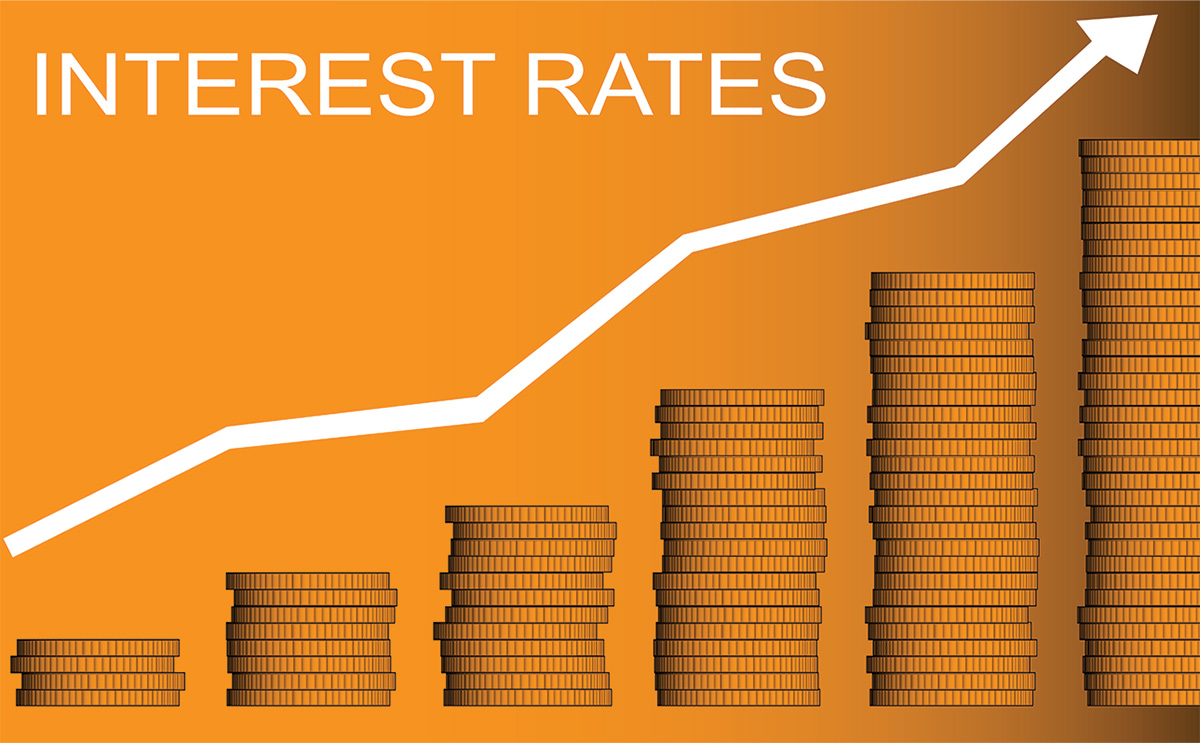
Picture it, you’re sitting in the lunchroom at work, and your coworker just bought a house. Another coworker bought one a few months ago and you hear that she got a totally different interest rate than the other one did, even though they both bought houses not that far from each other. Homebuyers everywhere have been wondering what interest rates they are going to get, lately. It’s easy to read an article online or see an ad on social media stating specific numbers, but there may be more than meets the eye going into a particular buyer’s interest rate.
What are the factors that can affect the interest rate a buyer eventually “locks in”?
- Property details – certain properties may be in neighborhoods with higher rates of foreclosure, or there may be specific census tracts that allow a buyer to participate in the “Fannie Mae Home Ready” and “Freddie Mac Home Possible” programs, which carry more flexible requirements such as various income limits and lower interest rates, to help people begin homeownership.
- Type of loan / loan amount– a conventional, conforming loan or a jumbo loan can have differing interest rates, as well as FHA loans.
- Credit score – most people are aware that this affects what interest rate is quoted, just like on a credit card. Some lenders will work with you on ways to improve a credit score if the goal is to buy six, nine, or 12 months from now.
- Lock period – do you want to lock in the rate for 30 days? 45? Market volatility can cause the rates to change so it will cost more money to hold onto a particular interest rate.
- Loan to value ratio – one can still buy a home with less than 20% down, but the rate that is quoted may be higher.
- Occupancy type – is this the primary residence or an investment property?
- Points bought or credits taken – A buyer can pay the lender a fee to buy down the interest rate, or the seller can sometimes offer a credit. This has become more popular in recent years.
- Market conditions – keep an eye on the news – as we are all aware, change is the only constant!
Lender Tina del Casale with Atlantic Union Bank says, “With jumbo fixed rates in the low 6’s, and first-time buyer down payment assistance loans such as DC Open Doors, rates are in the mid 7’s. With the added factors of your income, the address you are purchasing and your credit score factoring into the equation, interest rates are different from buyer to buyer these days. So, skip the online tools and make a few calls because that’s the only way to get an accurate quote these days!”
It might feel like an overwhelming amount of information to take on, but remember, there are people that help others take these big steps every day. A trusted lender and Realtor can guide their clients from start to finish when it comes to purchasing a home. And for that, you’ll be saying, “thank you for being a friend!”
Joseph Hudson is a referral agent with Metro Referrals. Reach him at 703-587-0597 or [email protected].
Real Estate
The best U.S. cities for LGBTQ homebuyers in 2025
Where strong equality scores, vibrant culture, attainable prices converge
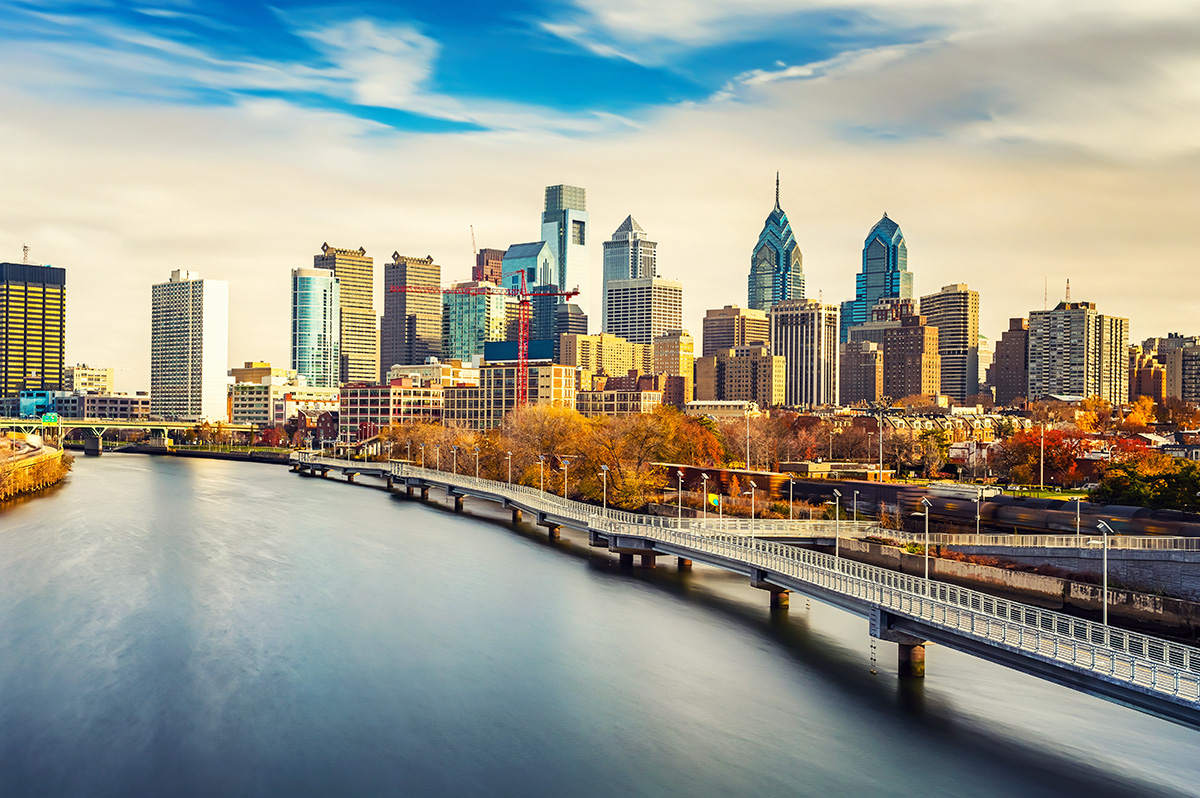
Buying a home has always been a landmark of security and self-expression. For LGBTQ+ people, it can also be a powerful act of claiming space in a country where housing equality is still a work in progress. The good news? This year offers more options—and more protections—than ever. A record-breaking 130 U.S. cities now score a perfect 100 on the Human Rights Campaign’s Municipal Equality Index (MEI), meaning their local laws, services, and political leadership actively protect queer residents, reports.hrc.org. Meanwhile, national housing analysts at Zillow expect only modest price growth this year (about 2.6 percent), giving buyers a little breathing room to shop around.
Below are eight standout markets where strong equality scores, vibrant LGBTQ+ culture, and relatively attainable prices converge. Median sale prices are from March 2025 Zillow data.
1. Minneapolis–St. Paul, MN
Median sale price: $317,500
Twin Cities residents benefit from statewide nondiscrimination laws that explicitly cover sexual orientation and gender identity, a thriving queer arts scene, and dozens of neighborhood Pride celebrations beyond the mega-festival each June. Buyers also appreciate Minnesota’s down-payment assistance programs for first-time and BIPOC purchasers—many LGBTQ+ households qualify.
2. Philadelphia
Median sale price: $227,667
Philly combines East Coast culture with Mid-Atlantic affordability. “Gayborhood” anchors like Giovanni’s Room bookstore mingle with new LGBTQ-owned cafés in Fishtown and South Philly. Pennsylvania added statewide housing protections in 2024, closing the legal gaps that once worried trans and nonbinary buyers.
3. Pittsburgh
Median sale price: $221,667
Don’t let the steel-town stereotype fool you—Pittsburgh’s MEI score is 100, and its real-estate dollar stretches further than in comparable metros. Lawrenceville and Bloomfield have become hubs for queer-owned eateries and co-working spaces, while regional employers in tech and healthcare boast top Corporate Equality Index ratings.
4. Tucson, Ariz.
Median sale price: $328,333
This desert city punches above its weight in LGBTQ+ visibility thanks to the University of Arizona, a nationally ranked Pride parade, and some of the country’s most picturesque outdoor recreation. Arizona’s statewide fair-housing statute now explicitly lists gender identity, giving buyers added recourse if discrimination occurs.
5. Madison, Wisc.
Median sale price: $413,867
Madison blends progressive politics with a top-five public university and a booming tech corridor. Local lenders routinely promote inclusive marketing, and Dane County offers one of the few county-level LGBTQ+ home-ownership programs in the nation, providing up to $10,000 in forgivable assistance for low-to-moderate-income couples.
6. Atlanta
Median sale price: $359,967
The cultural capital of the Southeast delivers queer nightlife, Fortune 500 jobs, and a web of supportive nonprofits such as Lost-n-Found Youth. While Georgia lacks statewide protections, Atlanta’s 100-point MEI score covers public accommodations, contracting, and employer requirements—shielding homebuyers who choose in-town neighborhoods like Midtown or East Point.
7. St. Petersburg, Fla.
Median sale price: $354,667 Yes, Florida’s statewide politics are turbulent, but St. Pete has long held firm on LGBTQ+ equality. The city’s Pride festival draws nearly a million visitors, and local ordinances bar discrimination in housing and public services. Waterfront bungalows in Kenwood and more affordable condos near Uptown give first-time buyers options.
8. Denver
Median sale price: $563,500
Colorado passed some of the nation’s strongest gender identity housing protections in 2024, and Denver’s queer community remains one of the most visible in the Mountain West. Although prices run higher, buyers gain exceptional job growth and one of the country’s largest Gay & Lesbian Chambers of Commerce.
Smart Strategies for LGBTQ+ Buyers & Sellers
1. Build Your Dream Team Early
- Work with an equality-focused real-estate pro. The easiest way is to start at GayRealEstate.com, which has screened gay, lesbian, and allied agents in every U.S. market for more than 30 years.
- Choose inclusive lenders and inspectors. Ask whether each vendor follows HUD’s 2021 guidance interpreting the Fair Housing Act to cover sexual orientation and gender identity.
2. Know Your Rights—And Limitations
- Federal law bars housing bias, but enforcement can lag. Document everything and report issues to HUD, your state civil-rights agency, or Lambda Legal.
- In states without full protections, rely on city ordinances (check the MEI) and add explicit nondiscrimination language to your purchase contract.
3. Evaluate Neighborhood Fit
- Use local data: crime stats, school ratings, transit, and MEI scores of nearby suburbs.
- Spend time in queer-owned cafés, bars, and community centers to gauge true inclusivity.
4. For Sellers: Market With Pride—And Professionalism
- Highlight proximity to LGBTQ+ resources (community centers, Pride festivals) in your listing remarks.
- Stage neutrally but inclusively—rainbow art is great, but removing personal photos can protect privacy during showings.
The landscape for LGBTQ+ homeowners is evolving fast. By coupling inclusive laws, supportive culture, and attainable prices, cities like Minneapolis, Philadelphia, and Tucson stand out for 2025. No matter where you land, surround yourself with professionals who value every part of your identity. Start your journey at GayRealEstate.com, lean on the resources above, and claim your corner of the American dream—on your own terms, and with pride.
Scott Helms is president and owner of Gayrealestate.com.
Real Estate
Summer-ready rentals: How to prepare for the season
Inspect your A/C, upgrade the kitchen, and more
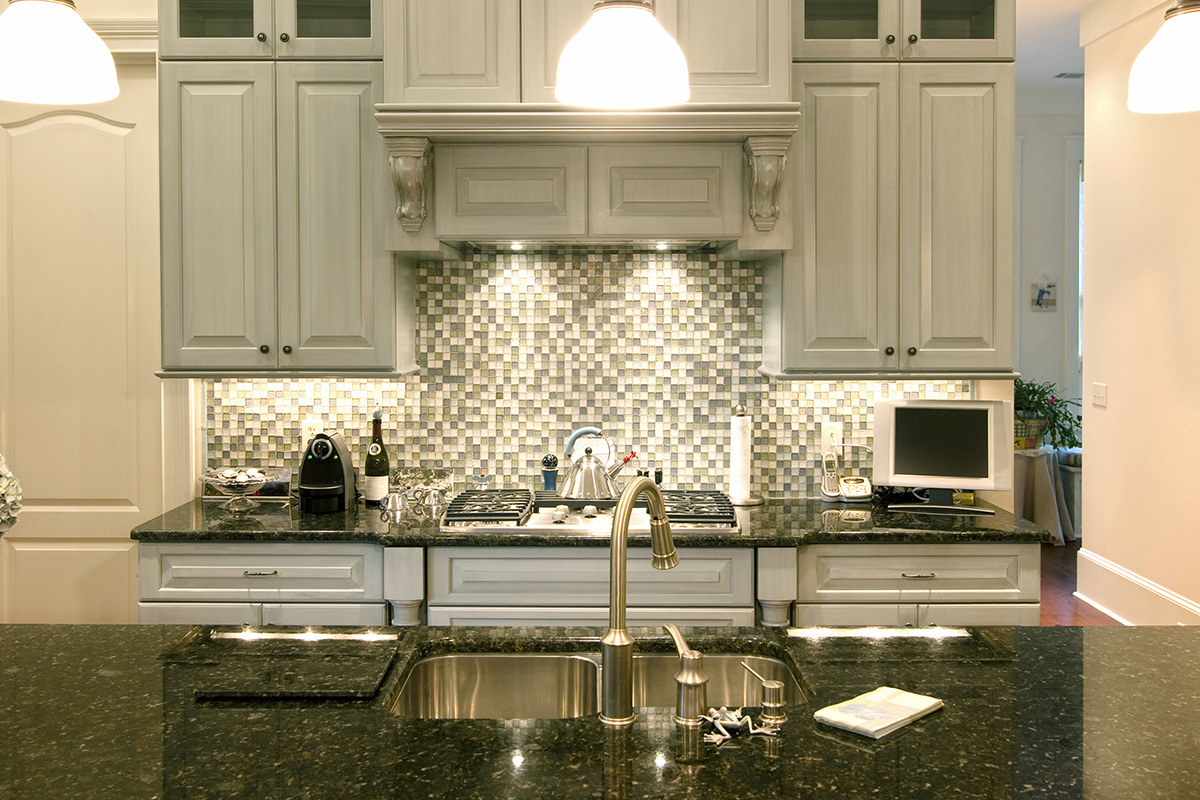
Now’s the time to get your property looking sharp for summer. In the D.C. rental market, summer is our version of the Super Bowl. Tenants are on the move, leases are flipping, and if your property isn’t ready for game time, you’re sitting on the bench while the competition scores.
Here’s how to get your rental property summer-ready, keep it competitive, and avoid the scramble once the heat (and the demand) is on.
First Impressions Count
In a walkable city like D.C., curb appeal isn’t a luxury, it’s your ticket to play. Prospective tenants don’t just scroll through listings from their couches; they walk the neighborhoods, eyeing buildings and row homes like it’s a real-life episode of House Hunters. If your property looks run-down from the sidewalk, it doesn’t matter how nice it is inside: you’ll already have lost their attention.
Start with a good power wash. Sidewalks, front steps, and that brick façade can collect a year’s worth of grime and pollen, and nothing says “we didn’t get around to it” quite like a dingy entryway. Once that’s done, grab a paintbrush and freshen up the details — front doors, railings, and window trim are often the first thing people see, and chipped or faded paint sends the wrong message. Landscaping doesn’t have to rival a botanical garden, but it should be tidy and intentional. A few potted plants, some trimmed bushes, and a weed-free yard show that you care. And don’t forget the lighting — a working porch light adds a layer of polish and safety. Think of curb appeal like a dating profile picture. If it’s not appealing, people won’t even bother to swipe right.
Handle Maintenance Before Repair Emergencies
Summer in D.C. means one thing: humidity. And it’s not just uncomfortable. It’s a property’s worst enemy if you’re not on top of things. Tenants will test that A/C the minute they move in, so don’t wait for a 98-degree day to find out the AC compressor is clogged and is not performing to its potential. While you’re at it, check those windows and screens. No one wants a unit that turns into a sauna because the windows won’t open or the screens are shredded.
Plumbing deserves a once-over, too. In some of D.C.’s older neighborhoods, tree roots have been known to snake their way into century-old pipes. If you’ve had slow drains or backups, now’s the time to act. And don’t skip out on pest control. Ants, roaches, and rodents all love a good D.C. summer, but your tenants sure don’t. A preventative visit now can spare you the late-night emergency call later.
Upgrade What Matters
If your place still has that “2008 Craigslist listing” look, now’s your chance for a low-cost glow-up that pays off in higher rent and better tenants.
You don’t have to renovate the entire kitchen, but a few strategic upgrades can keep your property feeling current without breaking the bank. Swapping out dated cabinet pulls or faucet fixtures is a quick win. Replacing an old Formica countertop with stone is a great add, albeit a bigger investment.
Installing a smart thermostat or keyless entry, especially if you’re trying to attract a tech-savvy tenant, adds a bit of glitz. And don’t underestimate the value of LED lighting. Not only is the lighting brighter, but energy efficiency is a real plus when Pepco bills start climbing.
Don’t Forget the Marketing Materials
The window for summer leasing moves fast. Between May and August, tenants are locking in their spots quickly, and they aren’t wasting time on listings that look outdated or vague. Having strong, current marketing materials can be the difference between locking in a new tenant over several weeks or watching your property sit vacant for several months while others get rented.
When writing your listing, make sure it reflects the strengths of the unit and its location. Is there a private balcony that catches the sunset? Mention it. Is the washer and dryer tucked inside the unit instead of down a shared hallway? Highlight that. And in the D.C. summer heat, central A/C and ceiling fans aren’t bonuses; they’re expectations. Mention any shaded outdoor spaces, or if you’re lucky enough to be close to a pool, splash pad, or one of the city’s beloved parks, say so.
Once the property is shining on the outside and tuned up inside, the final step is making sure that polish shows up in your marketing. Your listing needs to be more than just functional, it needs to sell. That starts with updated and clear photos. Snap new images once the landscaping is cleaned up, the paint has dried, and the light’s hitting just right. Don’t use older photos pre-2020 where the tree out front was still a sapling and the trash bins were in the shot. And please, always close toilet seats first! Prospective renters are savvy, and their intuition perks up when they see less than professional looking photos.
It’s All About Timing
This summer, make the most of the opportunity. In D.C., there’s a wave of renters moving for new jobs, internships, or simply trying to relocate before school starts. Landlords who prep early and market smartly are the ones who don’t just find tenants, they find good tenants. And they fill units faster.
Grab that to-do list, schedule those contractors, and maybe treat yourself to a cold one after a long day of touch-ups. You’ll thank yourself later when your rental is leased out and earning while others are still scrambling at the end of the season.
Scott Bloom is owner and senior property manager at Columbia Property Management. For more information and resources, visit ColumbiaPM.com.
-

 World Pride 20253 days ago
World Pride 20253 days agoWorldPride recap: Festival, parade, fireworks, and Doechii
-

 U.S. Federal Courts3 days ago
U.S. Federal Courts3 days agoJudge temporarily blocks executive orders targeting LGBTQ, HIV groups
-

 Photos3 days ago
Photos3 days agoPHOTOS: WorldPride Parade
-

 Photos3 days ago
Photos3 days agoPHOTOS: WorldPride Street Festival and Closing Concert

